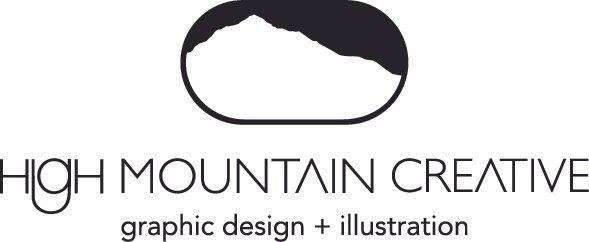4 Must-Haves for Your Nonprofit's Brand Kit
Set yourself up for success by loading your brand kit with a professionally designed logo, styleguide, mission statement, and design templates.
Building a cohesive and memorable brand is crucial for nonprofits; it strengthens credibility, trust, and engagement with an audience. A well-constructed brand kit simplifies this process, helping you present a unified look and feel across all platforms and materials. This guide covers four must-have elements for your nonprofit's brand kit, ensuring that your organization can communicate its mission clearly, professionally, and effectively.
Sample of a professionally designed logo with a page from a brand styleguide for Visit USA Parks.
Professionally Designed Logo: Your logo is the face of your organization, it does a lot of heavy lifting that you may not even realize. It needs to represent your mission and convey all of the hard work you do. It needs to be relevant to donors, supporters, and beneficiaries – and oftentimes appeal to an audience from many different socioeconomic backgrounds, age groups, genders, and walks of life. You should feel a huge sense of pride when you see you logo. Don’t treat your logo like an old pair of shoes in the back of your closet, if you look at your logo and think “it’s outdated, the colors are ugly, and I have no idea what the graphics represent” then consider a rebrand or a brand refresh. If your organization is just getting started and you haven’t had a logo created yet, consider prioritizing this investment as it will payoff for years to come.
Styleguide: This is your brand bible. It should include, at minimum, your brand fonts, colors, and logo standards. A more comprehensive brand styleguide may also include things beyond visual identity like brand voice or narrative, core values, communications plans, messaging strategy, etc. Regardless of the depth of your styleguide, its purpose is to be a tool that can be handed off to anyone inside or outside of your organization – staff, contractors, partners, media, etc. – to help them maintain the integrity of your brand.
Mission Statement: If you have one piece of brand language solidified, have it be your mission statement. It can help lay groundwork for how you communicate with your audience. If you already have a mission statement, but aren’t sure the last time it was reviewed, now’s a good time to do that.
You can google Mission statement formulas and find a lot of different formulas to try. The key is to basically create an elevator pitch that explains the what, why, and how of your organization so that you can confidently explain the point of your organization to a total stranger (like a donor) in 30 seconds.
Here’s a sample formula you can use:
[Organization’s name]’s mission is to [your organization’s goal] by [what your organization offers] so [impact].
Here’s an example using a fake nonprofit organization I made up:
The Clean River Nonprofit’s mission is to remove 1 million pieces of trash from rivers by 2030 by empowering young people to organize river cleanups so humans and wildlife can enjoy clean, healthy rivers for years to come.
This is also a great starting point for creating a set of brand words or phrases that can be carried over to your website, social media, and marketing language. For example, words and phrases like “clean, healthy rivers,” and “1 million pieces of trash” can become core statements in other places. “Help us fundraise $10,000 to support clean, healthy rivers,” or “We decided to set a goal to pick up 1 million pieces of trash by 2030 because river pollution is harmful to humans and wildlife.”Design Templates: Whether you have an in-house design team that develops templates in Adobe or you’re the wear-all-the-hats communications person creating layouts in Canva, templates are going to be your best friend for helping keep your organization on-brand. Having a basic set of design templates for commonly-used items like business cards, social media posts, newsletters, and flyers will not only save you a bucket load of time when building out brand assets, it will also ensure consistency with the look and feel of everything your organization is putting out which builds trust and recognition with your donors, supporters, and beneficiaries.
I hope this list inspires you to check-in with your brand standards and create a streamlined system for making sure your organization’s brand creates a memorable, trustworthy, feel-good experience for your supporters!
I’m Margo! A graphic designer who works with environmental nonprofits and mission-driven brands on projects like logos & branding, annual reports, maps, and infographics. I work with my clients to create beautiful and meaningful design that amplifies the marketing efforts it takes to ignite action and change. Visit my portfolio to see some of the projects I’ve collaborated on with nonprofits to protect the environment.


